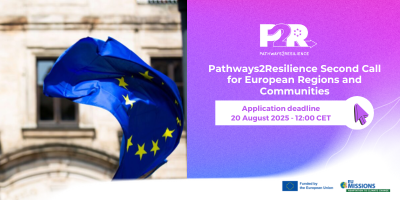Guest article by Marcelo Quizhpe, Director of Environemntal Management of the Azuay Prefecture.
We could say that the level of awareness about the importance of water reflects the vision of solidarity for the care and protection of life. Historically, water has been and is still to this day, the axis of physical-spatial organization and territorial planning. Since the beginning of humanity, starting from nomadic communities, and later establishing as sedentary communities, human beings sought to settle in the vicinity of bodies of water such as lakes, margins of rivers and seas.
Nowadays, talking about water is talking about a fundamental right for the life of human beings, flora, fauna, and mother earth. It is also talking about a natural element subjected to contamination hazards due to the intensification of human activities that modify ecosystems and therefore the water cycle. A crisis that is fueled by human activities that produce greenhouse gases, enhancing climate change, and that have led us to the current climate crisis, which we feel with more strength every day, so we must assume and accept that we are facing a challenge of great magnitude for the survival of the human species and the planet.
Climate change is a global problem. Evidence of this change is an increase in global temperature due to the increase in the greenhouse effect, changes in sea water level, glaciar retreats, among others. Alterations that generate heat waves, droughts in some areas and floods in others, torrential rains, hurricanes and other natural disasters reported around the world.
In Ecuador, climate change is evident in the melting of mountain glaciers, changes in rainfall regimes, the increase in average temperature throughout the country, among other effects. All these changes have aggravated the problems of poverty causing damages to human health and our ecosystems.
One of the greatest threats in our country and one that contributes to climate change is oil and metal mining activities, with concessions granted in lands that, in addition to being recharge and water regulation areas, are also classified as carbon sinks. In the Cuenca canton within the Macizo El Cajas, 60, hectares of paramo have been concessioned. Similarly, native forest areas have also been granted for mining or oil activities such as the Yasuní National Park, one of the most biodiverse areas on the planet and territory of people in voluntary isolation.
The mining industry not only contributes to increasing climate change, but increases its impacts. The mining industry is highly polluting and consuming of water and alongside climate change, one of the main problems will be water stress in the entire ecosystem of regulation and recharge of water, as well as in the populations supplied with the element liquid.

To preserve the paramos, water sources and resist climate change with a holistic and integrating vision, the Prefecture of Azuay has recovered the minka, as a participatory process that integrates the wisdom of indigenous and native people, communities, young people and the institutional sector that participate in the activities of environmental management. This is inspired by the Allí Sumak Kawsay or Living Well, recognizing that indigenous peoples constitute only 5% of the world population; however, they are the essential guardians of the environment. Traditional indigenous territories cover 22% of the world’s land area, but 80% of the planet’s biodiversity.
Searching for alternatives to the climate crisis means recovering, recognizing, recreating and renewing popular wisdom, which is why the Prefecture of Azuay is implementing the tree planting and reforestation of micro-watersheds with 4 million trees of native species and traditional fruit species in these areas, under the commitment Yakumanta, Allpamanta, Kawsaymanta (For water, for land, for life), together with the communities. Water meetings and community sectors are held throughout the province of Azuay.
Tree planting and reforestation as part of a comprehensive process that interrelates biodiversity, productive, socio-cultural and historical activities will allow the construction of comprehensive environmental indicators to monitor the effects of the climate crisis and propose real alternatives.
The relationship between water and climate change must be an essential factor in the public policies of territorial planning, assuming socio-environmental challenges based on social participation that privileges the integral management of water by protecting fragile ecosystems such as paramos and forests.
It is urgent to recover the wisdom of the ancestral people to start the hydrological transition from water as a commercial resource to a holistic and comprehensive vision that preserves water sources as a territorial space free of contamination, that guarantees the continuous flow in quantity and quality.

This article is part of a series of exemplary adaptation actions implemented by regional governments around the world within the RegionsAdapt initiative. Regional governments interested in joining RegionsAdapt can do it by clicking here.



